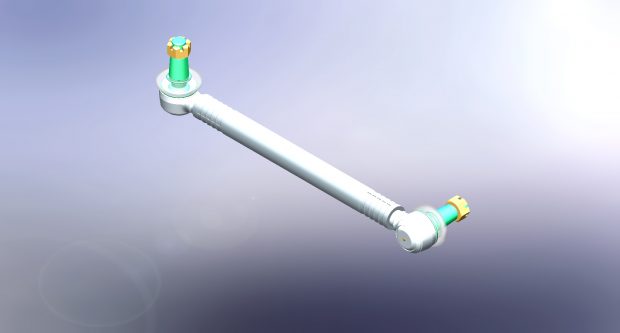
Image courtesy of Pailton Engineering.
Latest News
April 16, 2018
The variety of military vehicles currently out for tender demonstrates the lack of consensus on military vehicle design at present. However, it does also highlight the willingness of original equipment manufacturers (OEMs) to push the envelope, contributing to the development of high-tech, well-armoured and agile military vehicles. It is because of this that, steering system specialist, Pailton Engineering, set out to meet an unusually difficult specification of a particular military vehicle OEM.
 Image courtesy of Pailton Engineering.
Image courtesy of Pailton Engineering.Pailton Engineering designs, manufacturers and tests bespoke steering systems for large vehicles, including military, haulage and construction vehicles. Over the last two decades, the Pailton team has developed a long-standing relationship with various military vehicle OEMs, providing ball joints, drag links and steering columns.
The team at Pailton Engineering received a new project request, regarding a tender for a military-grade drag link assembly.
Downsizing
A drag link is made up of two ball joints with an intermediate tube. The military vehicle OEM was looking for a steering specialist to design and create a small, lightweight drag link assembly that would allow the vehicle to remain light and nimble, but also have the strength to handle the maximum load values the vehicle could face during its application.
“The vehicle in question was a lightweight personnel carrier, with speed being the key feature of its design,” says Eric Sonahee, design and development engineer at Pailton Engineering. “Designed to have a top speed of 70 mph, it has the potential to be one of the most agile and nimble military vehicles in the industry.”
“This is why every gram of weight counted. So, the drag link needed to be able to withstand maximum usage loads in one small, light and compact part. This was no easy task, especially considering that this vehicle could be used all over the world and, therefore, needed to be tested against temperatures as low as -40 degrees Celsius.”
Competition
Pailton’s team of designers analyzed the loading information and selected the right joints by carrying out theoretical calculations on all aspects of the assembly. However, this standard way of working wasn’t sufficient for such a non-standard request.
“As the customer wanted such a small, light joint, just carrying out a theoretical calculation wasn’t enough,” says Sonahee. “So, we also undertook a variety of physical testing to find a small enough part to fit the brief—which was incredibly challenging. We then took a different path to get around this problem, keeping the same geometry of the drag link but changing the material to a lightweight, yet strong, alternative.”
Testing Matters
Pailton continually carried out testing of this non-standard drag link throughout the design process to very accurate loads, in order to generate detailed findings. This was especially important as the military vehicle OEM wanted to put their vehicles straight into an intensive test program, and was expecting the components to perform to the highest level.
Winners
The OEM had multiple test vehicles set up at its site to test different parts from a range of potential suppliers. These vehicles were intensively trialed on an assault course, simulating driving thousands of miles over the duration of a just a week. This led to Pailton eventually winning the contract.
For more info, visit Pailton Engineering.
Sources: Press materials received from the company.
Subscribe to our FREE magazine, FREE email newsletters or both!
Latest News






